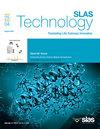Magnetic nanoparticles-based targeted drug delivery system in tumor pain management
IF 3.7
4区 医学
Q3 BIOCHEMICAL RESEARCH METHODS
引用次数: 0
Abstract
Background
the precise management of tumor-related pain is a critical challenge in improving the quality of life (QoL) of cancer patients. This study aimed to develop a magnetic nanoparticle-based transdermal drug delivery system (MNPs-TDDS) using green nanotechnology, incorporating folic acid targeting and magnetic-controlled release mechanisms, to achieve efficient and low-toxicity pain intervention.
Methods
folic acid-modified magnetic nanocomplexes (catHEC·FA@SPIO) were synthesized via a water-phase co-precipitation method. The structural and morphological characteristics were verified using Fourier transform infrared spectroscopy (FTIR), X-ray diffraction (XRD), and transmission electron microscopy (TEM). A total of 70 nasopharyngeal carcinoma (NPC) patients were enrolled and randomly divided into the experimental group (EG, MNPs-TDDS) and the control group (CG, conventional analgesia). Pain scores (NRS), psychological status (SAS/SDS), activities of daily living (Barthel index), and cancer cell apoptosis rates were assessed.
Results
the particle size of catHEC·FA@SPIO was 150±20 nm, exhibiting pH-responsive release properties (82.4 % cumulative release over 72 h at pH 5.5). The NRS scores (2.35±0.47 vs. 4.47±0.87), SAS (41.46±1.13 vs. 55.32±1.24), and SDS (40.06±0.75 vs. 54.11±1.52) in the EG were significantly lower than those in the CG (P < 0.05), with cytotoxicity to normal cells being under 10 %. The nursing satisfaction rate in the EG was 94.29 %, significantly higher than the 68.57 % in the CG (P < 0.001).
Conclusion
this study is the first to combine a green synthesis strategy with multidimensional clinical evaluation, demonstrating the comprehensive advantages of MNPs-TDDS in pain relief, improving psychological state, and enhancing activities of daily living. This approach provides an innovative solution for the precise management of tumor-related pain. Future research should further validate its long-term safety and applicability across various cancer types.
磁性纳米颗粒靶向给药系统在肿瘤疼痛治疗中的应用。
背景:肿瘤相关疼痛的精确治疗是提高肿瘤患者生活质量的关键挑战。本研究旨在利用绿色纳米技术开发基于磁性纳米颗粒的透皮给药系统(MNPs-TDDS),结合叶酸靶向和磁控释放机制,实现高效、低毒的疼痛干预。方法:采用水相共沉淀法合成叶酸修饰磁性纳米配合物(catHEC·FA@SPIO)。利用傅里叶变换红外光谱(FTIR)、x射线衍射(XRD)和透射电子显微镜(TEM)对其结构和形态特征进行了验证。选取70例鼻咽癌(NPC)患者,随机分为实验组(EG, MNPs-TDDS)和对照组(CG,常规镇痛)。评估疼痛评分(NRS)、心理状态(SAS/SDS)、日常生活活动(Barthel指数)和癌细胞凋亡率。结果:catHEC·FA@SPIO的粒径为150±20 nm,具有pH响应释放特性(在pH 5.5下72 h内累积释放82.4%)。EG组NRS评分(2.35±0.47比4.47±0.87)、SAS评分(41.46±1.13比55.32±1.24)、SDS评分(40.06±0.75比54.11±1.52)均显著低于CG组(p)。结论:本研究首次将绿色综合策略与临床多维度评价相结合,显示了MNPs-TDDS在缓解疼痛、改善心理状态、增强日常生活能力等方面的综合优势。这种方法为肿瘤相关疼痛的精确治疗提供了一种创新的解决方案。未来的研究应进一步验证其在各种癌症类型中的长期安全性和适用性。
本文章由计算机程序翻译,如有差异,请以英文原文为准。
求助全文
约1分钟内获得全文
求助全文
来源期刊

SLAS Technology
Computer Science-Computer Science Applications
CiteScore
6.30
自引率
7.40%
发文量
47
审稿时长
106 days
期刊介绍:
SLAS Technology emphasizes scientific and technical advances that enable and improve life sciences research and development; drug-delivery; diagnostics; biomedical and molecular imaging; and personalized and precision medicine. This includes high-throughput and other laboratory automation technologies; micro/nanotechnologies; analytical, separation and quantitative techniques; synthetic chemistry and biology; informatics (data analysis, statistics, bio, genomic and chemoinformatics); and more.
 求助内容:
求助内容: 应助结果提醒方式:
应助结果提醒方式:


